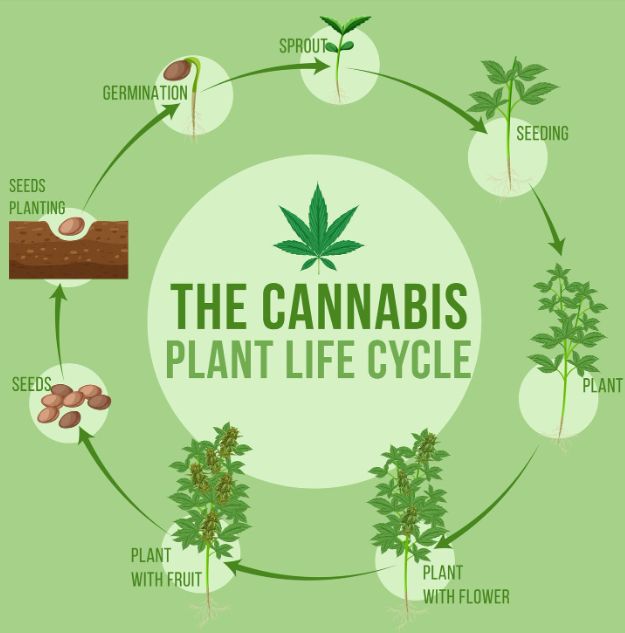Highlights
•Phytocannabinoids are moderate lipophilic electron-donors depending on the environment.
•Phytocannabinoids are not phototoxic substances with protective properties against UVA and UVB irradiation.
•Photo/stability among phytocannabinoids is quite diverse, which could affect biological testing and results interpretation.
•Chemical stability decreased in the order: cannabidiol > cannabigerol ≥ cannabinol > cannabichromene > tetrahydrocannabinol.

Oxidative stress is a root cause of aging and many modern ailments. Discover how phytocannabinoids like CBD, CBG, and CBC act as powerful, natural antioxidants to protect our cells from damage.
![]() The Battle Within: Understanding Oxidative Stress
The Battle Within: Understanding Oxidative Stress
Before we dive into phytocannabinoids, it's essential to understand the enemy they help fight: oxidative stress.
Our bodies constantly produce molecules called free radicals (or Reactive Oxygen Species - ROS) as natural byproducts of metabolism, exposure to toxins, UV radiation, and even exercise. These molecules are unstable because they have an unpaired electron, making them highly reactive as they "steal" electrons from other cells.
This electron theft damages proteins, lipids, and even DNA—a process called oxidative damage. While our bodies naturally produce antioxidants to neutralize free radicals, modern life often creates an imbalance where free radicals overwhelm our natural defenses. This state of imbalance is oxidative stress, a key contributor to aging and the development of various health conditions.
Enter phytocannabinoids. A growing body of scientific evidence has identified many of these plant-derived compounds as exceptionally effective antioxidants. Their unique chemical structure allows them to donate electrons to free radicals, neutralizing them and preventing cellular damage without becoming destabilized themselves.
The antioxidant mechanism of cannabinoids is often attributed to the phenolic ring in their molecular structure. This structural feature is a hallmark of potent antioxidants, also found in substances like vitamin E and curcumin.

Key Phytocannabinoids and Their Antioxidant Roles
CBD is one of the most extensively studied cannabinoids for its antioxidant properties.
Mechanism: CBD has been shown to scavenge harmful free radicals like hydroxyl (•OH) and superoxide (O2•−). It also upregulates the body's own endogenous antioxidant defenses by activating the Nrf2 pathway, a master regulator of antioxidant gene expression.
Research Insight: A landmark 1998 study even noted that CBD's antioxidant capabilities were superior to both Vitamin C and Vitamin E.
Potential Benefit: This potent antioxidant activity is a key reason CBD is researched for its neuroprotective qualities, helping to shield neurons from oxidative damage.
As the precursor molecule to THC and CBD, CBG is also a powerful antioxidant.•
Mechanism: Similar to CBD, CBG demonstrates an ability to neutralize free radicals and reduce oxidative stress.
Research Insight: Studies have shown CBG to be particularly effective in models of neurological inflammation and degeneration, where oxidative stress plays a central role. Its antioxidant action contributes to its observed protective effects.
Though less studied, CBC shows significant promise.
Mechanism: Research indicates that CBC can effectively scavenge free radicals, contributing to its overall anti-inflammatory and neuroprotective profile.
Research Insight: Its antioxidant function is seen as a key component of its ability to support overall cellular health.
Interestingly, even THC exhibits antioxidant properties.
Important Note: While THC can neutralize free radicals, its psychoactive effects and legal status often make it less desirable for this specific purpose compared to its non-psychoactive counterparts.
The Synergistic Advantage: The Entourage Effect Revisited
The antioxidant story of phytocannabinoids isn't just about individual molecules. It powerfully illustrates the entourage effect.
When combined, phytocannabinoids, along with terpenes and flavonoids from the whole plant, can create a more robust and multifaceted antioxidant defense system than any single compound alone. They may recycle and regenerate each other's antioxidant capacities, similar to how Vitamin C regenerates Vitamin E, leading to a longer-lasting and more effective neutralization of free radicals.
This is a primary reason why full-spectrum and broad-spectrum hemp extracts (which contain a wide array of these compounds) are often considered superior for harnessing the antioxidant benefits of the plant, compared to isolated cannabinoids.
The potent antioxidant properties of phytocannabinoids open doors to several potential applications:
Neuroprotection: Shielding brain cells from oxidative damage is a key research area for conditions like Alzheimer's, Parkinson's, and stroke.
Skin Health: Topical products with cannabinoids are increasingly popular for combating oxidative stress from UV radiation (photoaging) and environmental pollutants.
General Wellness: As a daily supplement, cannabinoids may help maintain systemic balance by supporting the body's defense against the constant assault of modern-day oxidative stress.
Harnessing Nature's Defense
The antioxidant capacity of phytocannabinoids is one of their most fundamental and exciting attributes. By offering a powerful, natural way to combat oxidative stress, compounds like CBD, CBG, and CBC act as silent guardians for our cells. This science underscores the immense value of the whole cannabis plant and its synergistic potential in supporting long-term health and wellness.
Interested in experiencing the benefits of full-spectrum cannabinoids? Explore our range of lab-tested, premium products crafted to harness the power of the entourage effect.
1.Hampson, A. J., et al. (1998). Cannabidiol and (-)Δ9-tetrahydrocannabinol are neuroprotective antioxidants. Proceedings of the National Academy of Sciences, 95(14), 8268-8273.
•Key Finding: This foundational study demonstrated that CBD and THC have potent antioxidant properties, noting that CBD was a more effective antioxidant than ascorbate (Vitamin C) or tocopherol (Vitamin E).
2.Atalay, S., et al. (2019). Antioxidative and Anti-Inflammatory Properties of Cannabidiol. Antioxidants, 9(1), 21.
•Key Finding: A comprehensive review detailing the mechanisms behind CBD's antioxidant and anti-inflammatory effects, including its role in activating the Nrf2 pathway.
3.Gugliandolo, A., et al. (2020). The Role of Cannabigerol in the Neuroprotective Effects of Cannabis Sativa. Biomolecules, 10(4), 619.
•Key Finding: This research highlights CBG's antioxidant and anti-inflammatory actions as central to its neuroprotective potential in experimental models.
4.Nadal, X., et al. (2017). The Role of Cannabinoids in Neurodegenerative Diseases. Cannabinoids in Health and Disease.
•Key Finding: A book chapter discussing the broader role of various cannabinoids, including their antioxidant functions, in protecting against neurodegenerative diseases.
5. Antioxidant function of phytocannabinoids: Molecular basis of their stability and cytoprotective properties under UV-irradiation.Free Radic Biol Med. 2021 Feb 20:164:258-270.doi: 10.1016/j.freeradbiomed.2021.01.012. Epub 2021 Jan 13.PMID: 33453360
Leave A Message
Scan to Wechat/Whatsapp :

